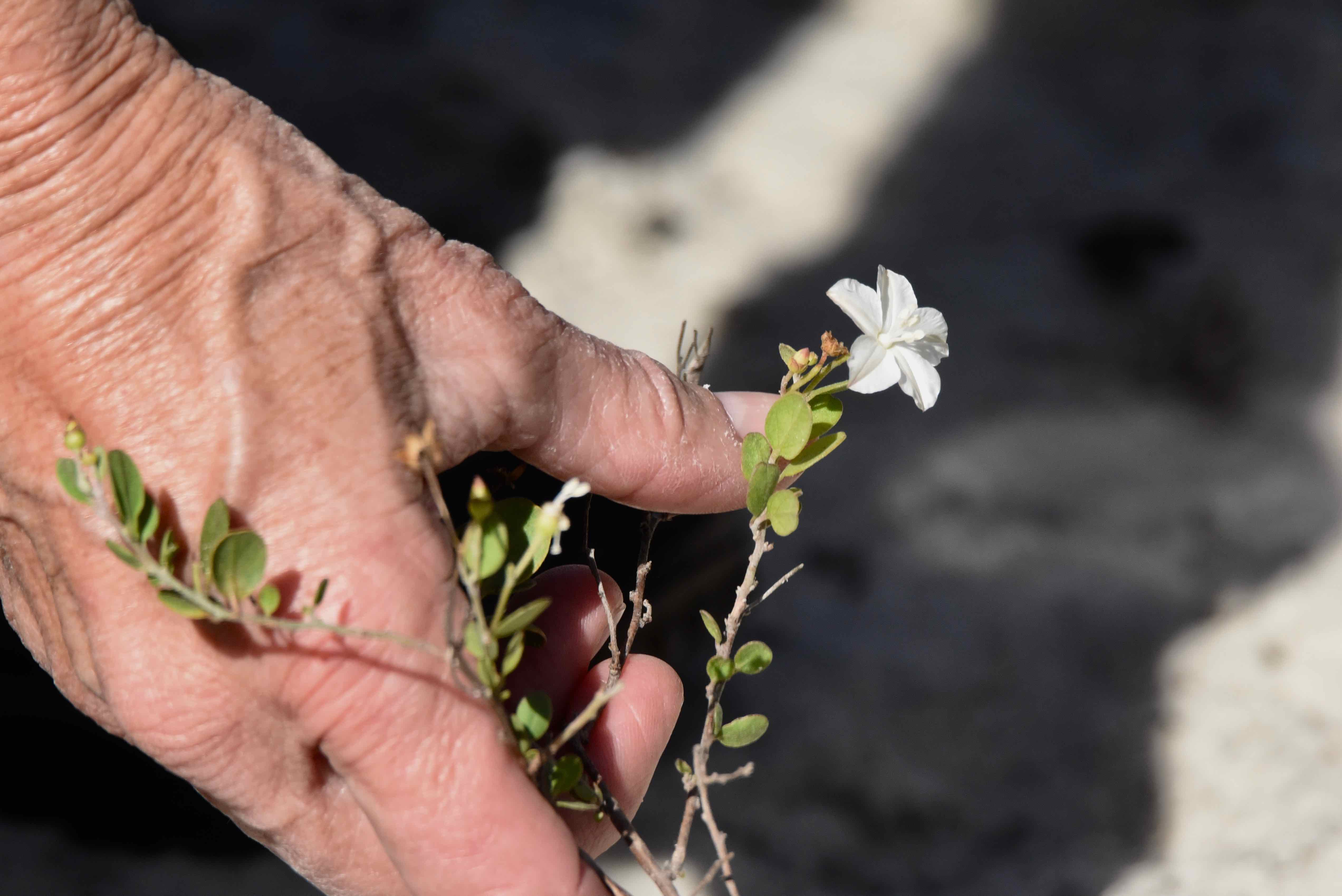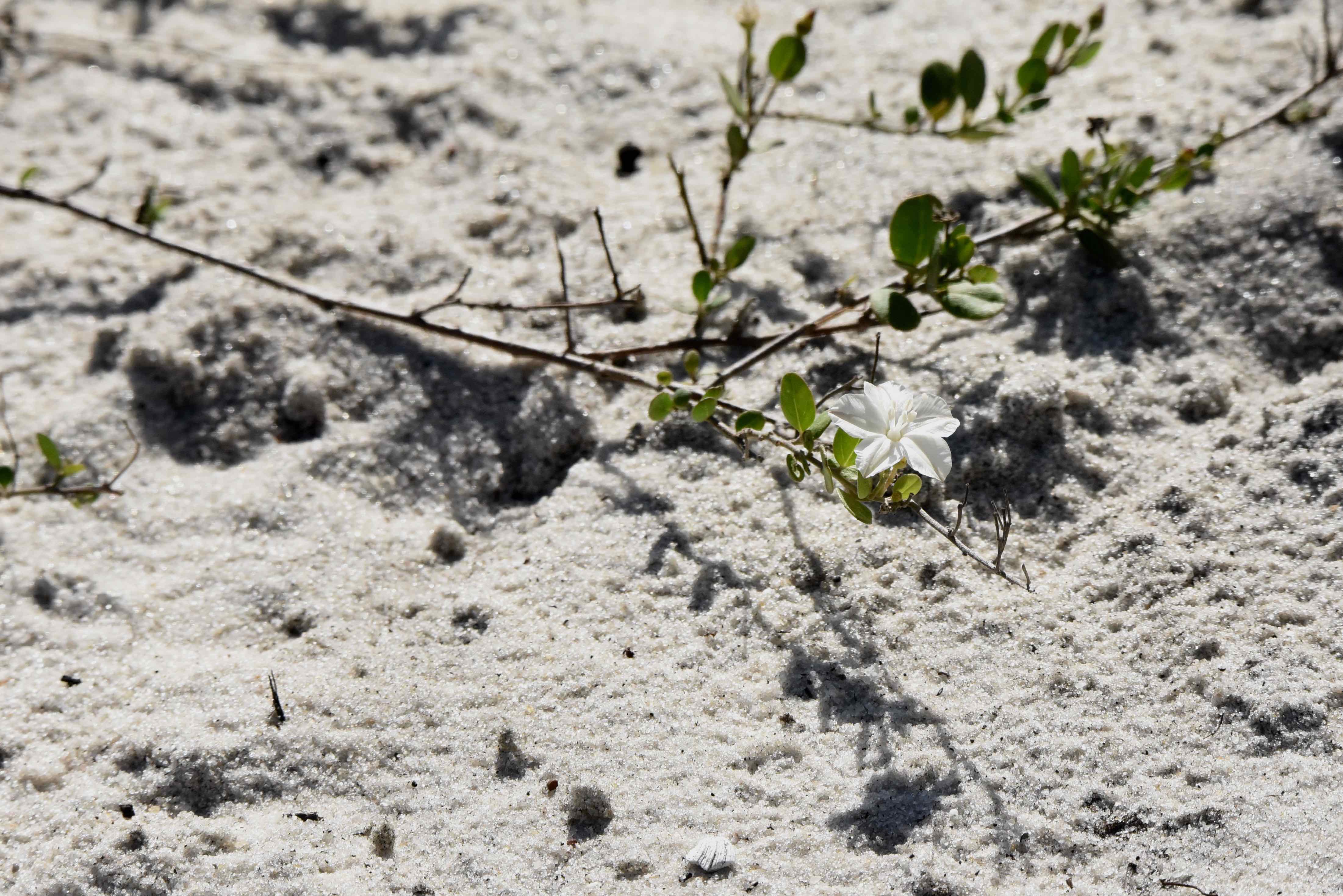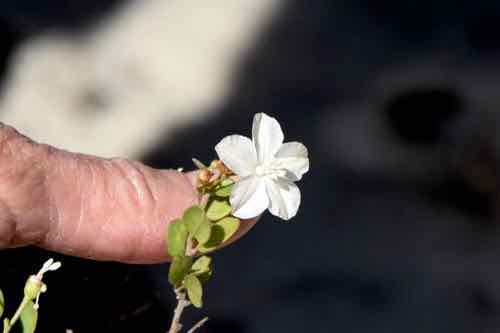
Beach clustervine, photographed at Juno Dunes Natural Area Oceanfront Tract, Juno Beach, Palm Beach County, in January 2019.
South Florida has no shortage of plants on the brink of extinction. Beach clustervine, Jacquemontia reclinata, unfortunately is one of them. And like many endangered plants, the big problem is habitat loss and fragmentation.
It has been on the Endangered Species List since 1993, but it is so rare that scientists and land managers catalogue each site where it grows and even each plant. It is a Florida native, in fact found only along Florida's southeastern coast between Miami-Dade and Palm Beach counties, roughly from Biscayne Bay to the Jupiter Inlet. It once grew on Hutchison Island as far north as Martin County but the places where it grew have been lost to development. The great naturalist John Kunkel Small believed beach clustervine also was native to the Bahamas, but that has been proven to be incorrect.
Beach clustervine is a low, sprawling member of the morning glory family. Unassuming might be a good word to describe it. It has thin, woody stems near the base and sends out lots of side branches. The leaves are arranged opposite each other along the stem; they're elliptical in shape and "entire," meaning they have neither lobes or "teeth" along the edges. However, they can have a slight notch at the tip that gives them something of a "heart" shape.
The leaves can be thick, or succulent; younger stems and leaves can be covered with hairs, adaptations to prevent the plant from drying out, important considering the the dry places where beach clustervine grows. The flowers are bright white or shades of pink, and about the size of a nickel; they bloom early in the day and fade away by late afternoon. Beach clustervine flowers mostly between November and May. It also reproduces through cuttings.
Beach clustervine grows at the crest and lee (inland) side of beach dunes. It clambers over low-lying neighbors and it produces a large, fibrous root system. It will grow into marine hammocks where hurricanes, fire or other disturbances create light gaps and open ground. It likes full sun, but seedlings do best in places where there is some shade to protect them. As the plants mature, they spread out into open, sunny areas. Beach clustervine can produce a lot of seeds, but seedlings are rarely found near adults.
The problem for beach clustervine is the loss of habitat. Almost all of it has been developed. In the few places where development hasn't taken place, invasive plants, such as beach naupuka, Brazilian pepper and Australian pines are a problem. Some sites have been lost to beach erosion. On top of that, the remaining sites where beach clustervine grows are geographically removed from each other, or fragmented. That limits genetic diversity, making the species more vulnerable to extinction. So all in all, the outlook for beach clustervine is bleak. But not hopeless. There are efforts to repopulate places where the plant has grown in the past and to augment populations where it still grows. Beach clustervine can be planted where beach dunes are being restored along with other species that would be part of its natural plant community.
Other names for beach clustervine: beach jacquemontia and reclined clustervine. It is a member of Convolvulaceae, the morning glory family.
Juno Dunes Natural Area Oceanfront Tract


